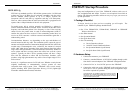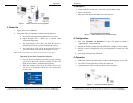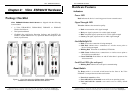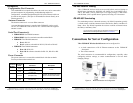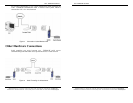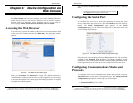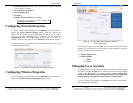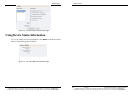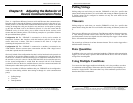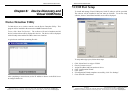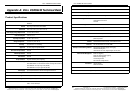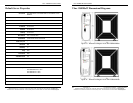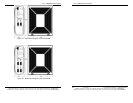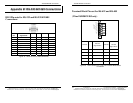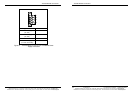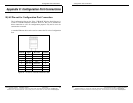
Device Communication Ports
Documentation Number: ESR90xW-4905m Chapter 5 21
B&B Electronics Mfg Co Inc – 707 Dayton Rd - PO Box 1040 - Ottawa IL 61350 - Ph 815-433-5100 - Fax 815-433-5104 – www.bb-elec.com
B&B Electronics Ltd – Westlink Commercial Park – Oranmore, Galway, Ireland – Ph +353 91-792444 – Fax +353 91-792445 – www.bb-europe.com
C
C
h
h
a
a
p
p
t
t
e
e
r
r
5
5
:
:
A
A
d
d
j
j
u
u
s
s
t
t
i
i
n
n
g
g
t
t
h
h
e
e
B
B
e
e
h
h
a
a
v
v
i
i
o
o
r
r
o
o
f
f
D
D
e
e
v
v
i
i
c
c
e
e
C
C
o
o
m
m
m
m
u
u
n
n
i
i
c
c
a
a
t
t
i
i
o
o
n
n
P
P
o
o
r
r
t
t
s
s
There is a significant difference between serial and Ethernet data communications.
Data that comes in through the Ethernet is presented to the device in the form of very
distinct packets. On the other hand without information about the format of the data
coming in through the serial port the device may not know at what point to package
up the data and hand it off to the Ethernet network. It is for this reason that the
ESR90xW series of devices allow you to define when the device converts serial
stream data into Ethernet packets. The following examples are provided to illustrate
the power behind these options:
Configuration #1: The ESR90xW is connected to a device used to monitor air
temperature. Software that interfaces with this hardware polls the device for the
current status once a minute. This data is returned in the form of a single byte
containing the temperature in Celsius.
Configuration #2: This ESR90xW is connected to a machine is connected to an
ATM machine. When a customer starts a transaction with the ATM a large burst of
serial data is passed onto the central bank.
Obviously in both of the configurations the data is critical and needs to be passed over
the network in the quickest manner possible. For configuration #1 the best behavior
for the device would be to send the incoming byte of temperature information out over
the network as soon as it comes in. On the other hand if the device acted the same way
for the second configuration it would flood the network with all of the Ethernet
overhead. In this case the device would be better to wait for a moment and send a full
Ethernet packet rather than a packet for each byte of data.
There are a number of different conditions that your ESR90xW can be configured to
watch for when dealing with the data coming in through it’s serial communication
port(s).
• Polling Strings
• Timeouts
• Data Quantities
Device Communication Ports
22 Chapter 5 Documentation Number: ESR90xW-4905m
B&B Electronics Mfg Co Inc – 707 Dayton Rd - PO Box 1040 - Ottawa IL 61350 - Ph 815-433-5100 - Fax 815-433-5104 – www.bb-elec.com
B&B Electronics Ltd – Westlink Commercial Park – Oranmore, Galway, Ireland – Ph +353 91-792444 – Fax +353 91-792445 – www.bb-europe.com
Polling Strings
Polling strings are used when you want the ESR90xW to look for a specific data
pattern before taking the data in it’s serial buffer and creating an Ethernet packet with
it. Polling strings can be configured to monitor not only the serial traffic but the
Ethernet traffic as well.
Timeouts
Polling strings are used when you want the ESR90xW to look for a specific data
pattern before taking the data in its serial buffer and creating an Ethernet packet with
it.
There are two different types of timeouts. Total Message and Inter-character timeouts.
A Total Message timeout counter starts when the first byte is received. Once the
specified amount of time has elapsed since this initial byte the trigger is fired and the
device will transmit the buffered data.
The second type of timeout is an Inter-character timeout. This is used to trigger after a
defined amount of inactivity.
Data Quantities
In addition to the two previously mentioned methods of Ethernet packet transmission
triggers you can also setup a specific data amount that the device will wait for before
acting on the incoming data.
Using Multiple Conditions
You can use the data trigger conditions individually or it is also possible to use them
in combination with each other. When more than one condition is specified they are
treated as a “logical AND”. This means that if any of the conditions specified is true
then the data buffer is transmitted.



